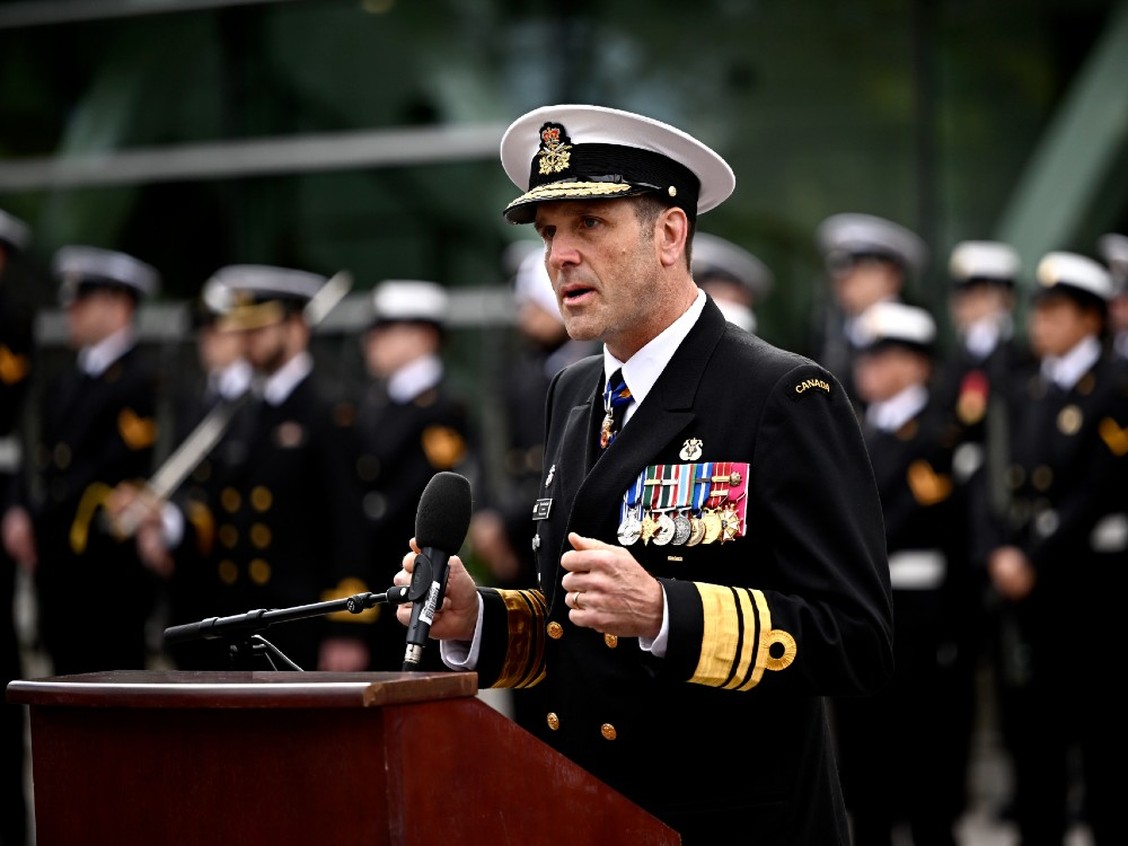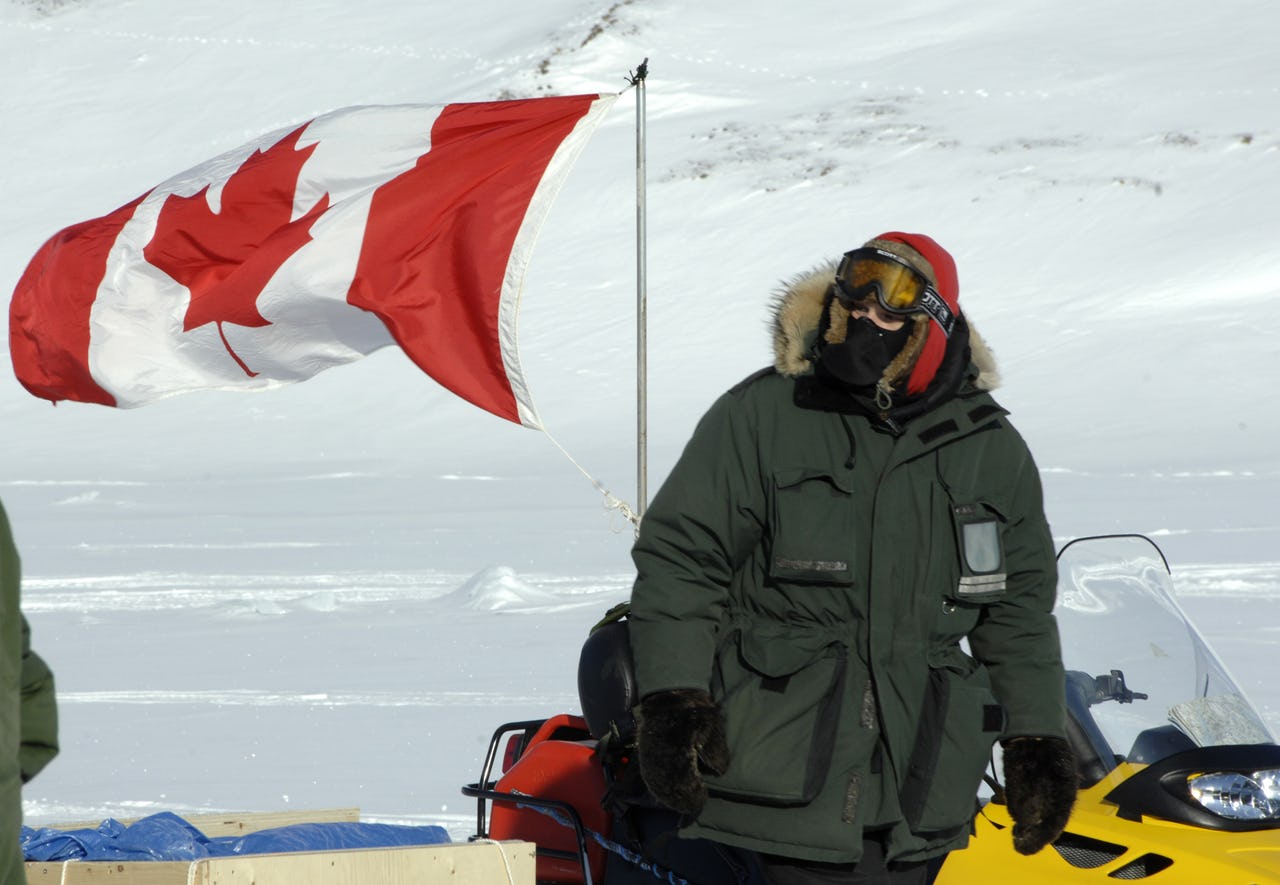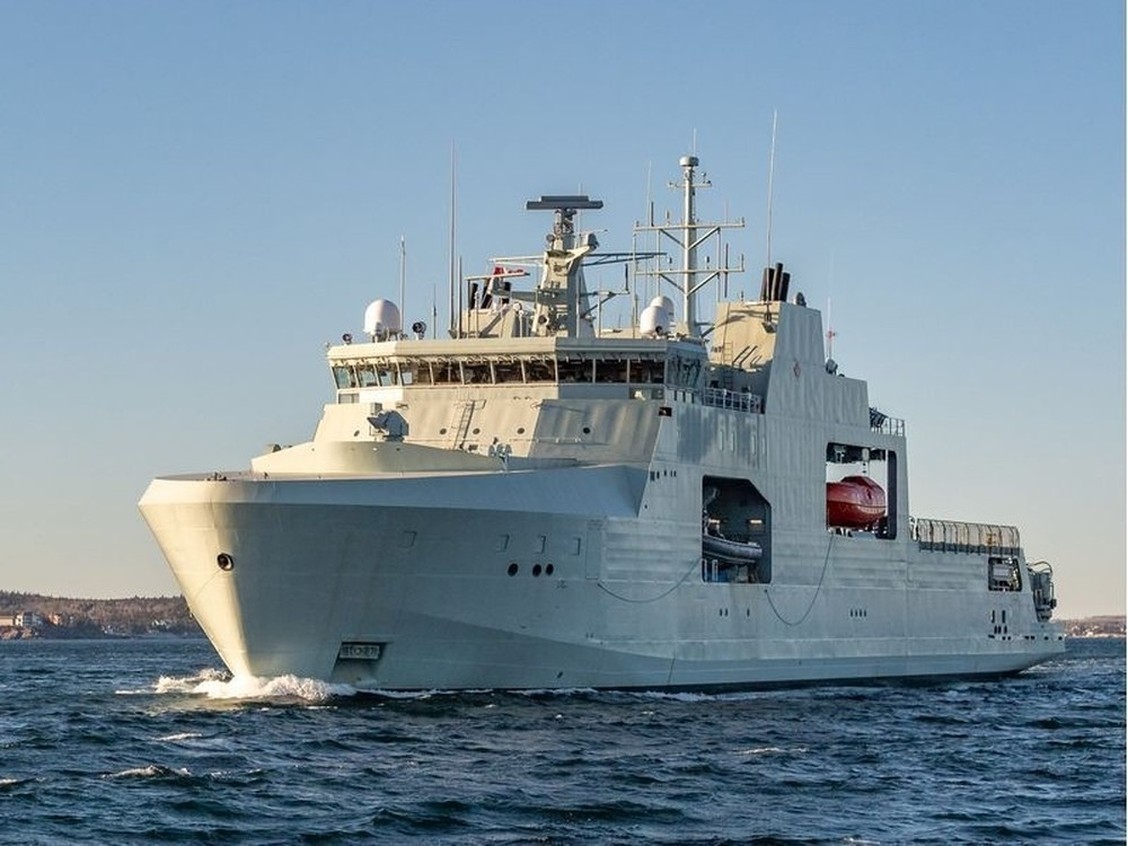Canadian Arctic Preparedness for China, Russia Challenges
"We wouldn't need the allies to come to our aid. We could deal with it ourselves. We have the capacity to deploy our ships up there right now to stop them.""They're not intended to be front-line combatants [Canada's Arctic and offshore patrol ships]. They have everything they need for the missions that we anticipate that [they'll] do. Were we to get into a wartime environment where we felt ... they could come directly under threat, then there's the capacity to install other weapons in sort of an ad hoc manner -- very similar to how you would defend an army forward operating base.""It would be really nice to believe that Russia would comply with international order, but their illegal and unprovoked invasion of Ukraine tells us that they have no interest in complying with international law and I can't trust anything Russia does until they withdraw from Ukraine and restore the full territorial integrity of Ukraine.""Until that changes, we're not going to trust Russia with anything and we're going to regard them with great suspicion and make sure we monitor everything they do.""On both coasts, we're experimenting to make sure that these ships would have legitimate wartime roles if they needed to."Canadian Vice-Admiral Angus Topshee
 |
| Vice-Admiral Angus Topshee, commander of the Canadian Navy, says the Canada could defend against Arctic trespassing with new ships, submarines and underwater surveillance technology. Photo by Justin Tang /Canadian Press |
Canada's new Arctic and offshore patrol ships carry a 25-mm cannon. Admiral Topshee is nothing but optimistic, assuring that "they're not intended to be front-line combatants"
and they could be jury-rigged with greater firepower should the need
arise. The Canadian military is entirely under-equipped in all its
service sectors, using outdated equipment badly in need of replacement.
The government of Canada is wedded, unfortunately in this era of
international destabilization, to its vision of climate change
imperilling the world, giving short shrift to concerns of countries of
the West, developed nations that recognize the need that to keep the
peace they must prepare to defend it.
At
the Halifax International Security Forum last week focusing on Arctic
sovereignty, along with the pressing topic of Russia's war in Ukraine,
Admiral Topshee pointed out that neither Russia nor China has -- yet --
passed through the Northwest Passage prior to obtaining Canada's
approval. Canada's sovereignty encompasses the Northwest Passage, the
great white frozen north which is becoming increasingly less frozen and
more approachable, with shipping times' potential greatly reduced once
the threat of pack sea ice is reduced, as Climate Change is gradually
proving to be capable of.
The
admiral feels that the expense of adding more built-in defensive
weapons to the Arctic and offshore patrol ships represents an unneeded
expense at the present time; clearly he feels no great rush is required
to match the Russian and Chinese shipbuilding modernity bristling with
military potential, as opposed to Canada's traditional lackadaisical
approach to defending its vast geographic holdings against territorially
rapacious countries covetously eyeing geographic areas on land and at
sea that are inadequately defended.
 |
| The Canadian flag flies proudly from the back of a snowmobile of a Canadian Ranger from the 1st Canadian Ranger Patrol Group (1 CRPG) near Eureka, Ellesmere Island, Nunavut. Photo: Kevin Paul |
While
it's all very Canadian to have Canada's northern First People monitor
and keep abreast of questionable activities in the far north, they are,
though determined to protect Canadian and Indigenous interests,
ill-equipped to confront fully militarized challengers to Canadian
sovereignty. A long overdue initiative to fully equip and man the
Canadian geography in preparation for a potential challenge calls for
serious investment and Canada's Liberal government continues to shirk
that demand, despite NATO's minimum requirement of 2% of GDP per
member-nation invested in military updates.
The
Arctic and offshore patrol ships are focused on anti-submarine warfare
on Canada's West Coast with the navy experimenting with towed arrays
capable of detecting submarines from thousands of kilometres' distance. "That
way you've got a ship that's not got the weapons to defend itself, but
it's looking for a submarine that's so far away the submarine doesn't
even know it's being hunted", explained Admiral
Topshee. The ship then goes on to deliver information to the Royal
Canadian Air Force to attack the submarine.
Admiral
Topshee anticipates seeing the first of a new Canadian submarine fleet
in operation early in the next decade, of the 12 modern, non-nuclear
submarines Canada plans to obtain in replacement of four diesel-electric
subs bought second-hand from Britain, all of which have proven to be
barely usable. When the new fleet is available, they will be dispatched
to "Leaving
Esquimault Harbour, sailing up through the Aleutians, the Bering
Strait, into the Beaufort Sea, patrolling for 21 days and then returning
home and doing the entire thing submerged and undetected".
Admiral
Topshee discussed the impracticability of Canada acquiring
nuclear-powered submarines given that they would require six times the
number of seamen as compared to non-nuclear subs, particularly given
that the Canadian Navy is already 20% short of the numbers of active
seamen it requires for basic duty, reflecting a similar shortage in
military personnel in other National Defense departments.
"Everything
we see the Ukrainians doing in the Back Sea -- we are taking a look at
that and saying what of that is relevant to us? How do we make it work?
and then, more importantly, at the same time, how do we counter it? So,
if we can figure out a way to defeat a ship with a drone, we also want
to be able to make sure that we ourselves can defeat that drone because
we know our adversaries are going to use it against us."
"[The
drones Ukrainians have used] very effectively to attack the Russian
fleet in Sebastopol ... look a lot like the drones that we've been using
for targets [Hammerhead drones]. So, could we take that same thing and
instead of using it to test our own ability to fire, load it full of
explosives and send it in?"
"Can
it really manage down to -40C? Battery performance tends to go downhill
quite quickly in all those environments ... A lot of our stuff is very,
very brittle. How well can you manipulate this stuff wearing heavy
mittens and gloves?"
 |
| Irving Shipbuilding is building these Arctic Offshore Patrol Ships for both the Royal Canadian Navy and Canadian Coast Guard. Photo: Cpl. Tony Chand/Courtesy |
Labels: Admiral Topshee, Canada's Far North, Inadequate Military Resources, Optimism Personified
0 Comments:
Post a Comment
<< Home